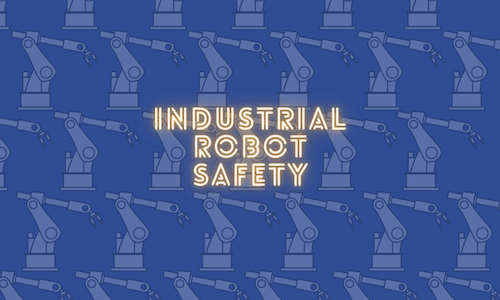There are numerous advantages to industrial automation. Consumers enjoy lower prices thanks to the cost-cutting benefits of factory machinery, and the increased productivity of a motion control system is enough to set any plant owner grinning from ear to ear. Higher output and lower costs are certainly important, but increased safety for human workers is arguably the most important benefit of industrial automation. Added safety for workers ironically hinges on those workers following industrial robot safety rules and regulations.
Automation makes work environments safer for humans, but they do not eliminate risk in the workplace. In fact, accidents are sometimes caused by industrial robots. This does not mean that industrial robots are unsafe, though. Proper use of machinery and adhering to industrial robot safety guidelines are necessary in keeping people safe from harm.
How robots make work safer for humans
Not quite sure how a giant, thoughtless, mechanized arm lends itself to safety? Basically any time automation removes a human element, it increases the safety for human workers. Machines are robust and made of metal, while humans are relatively fragile in comparison. Here are some ways that industrial robots make work safer for humans.
- Industrial robots don’t have nerves of steel. Industrial robots don’t have nerves at all. That’s why they aren’t as susceptible to extreme temperatures as humans. Automation can be implemented in hot or cold environments that may be unsafe for human workers.
- Repetitive motion injuries are common in manufacturing. If you sit on a production line using the exact same movements to attach the exact same part all day long, you’re at a risk of injury. Automating simple tasks helps reduce the likelihood of repetitive motion injuries in human workers.
- Industrial robots don’t mind poor air quality, but poor air quality can cause a slew of health problems for human workers. Automation helps remove humans from dangerous work environments.
- Manufacturing or industrial work often requires heavy lifting, and industrial robots help reduce the likelihood of lifting injuries among workers.
Why industrial robot safety matters
The Occupational Safety and Health Administration Guidelines for Robotics Safety identifies typical types of accidents involving industrial robots:
- A worker enters restricted areas that are not safe; they step beyond barriers meant to keep workers safe from industrial robots.
- Workers attempt to remove products from conveyor belts while the machinery is still running.
- A worker tries making adjustments to robots, such as disabling safety mechanisms.
- Malfunctioning machinery can cause injuries.
- The power is restored to a robot while servicing is taking place.
- Failure to properly shut down machinery.
- A worker tries making adjustments to machinery while machinery is running.
A worker might put their hands where they’re not supposed to, or they might step behind a safety barrier. Skirting industrial robot safety guidelines is the most common cause of injury with industrial robots.
It may seem easier to just grab an imperfect part from the line, or snag the tool that you dropped without turning off the power, but this increases the risk of injury.
Following proper safety protocols helps promote industrial robots safety.
It’s up to you to keep your work environment safe
Ultimately, automation makes work environments safer. However, this is only true as long as the machinery is being used properly. As automation continues to take over manufacturing, it’s important to focus on industrial robot safety.
Maybe one day industrial robots will be safe enough to deploy alongside human workers. However, that’s not currently the case, and we can’t rely on industrial robots to ensure worker safety. It’s important to build safer industrial robots, but it’s more important that we use and interact with robots safely.
Following proper safety protocol can help prevent accidents, but it can’t completely prevent accidents in manufacturing. A malfunctioning machine can also cause workplace injuries. That’s why it’s important to run routine maintenance and repair your machinery as soon as you notice a problem.
Indramat systems provide diagnostic messages that indicate your system’s operating status. We can troubleshoot most error codes directly over the phone. Call 479-422-03090 for immediate Indramat service or support.
We also offer Indramat factory repair and Indramat REMAN services. Call for immediate support, or contact us online.



